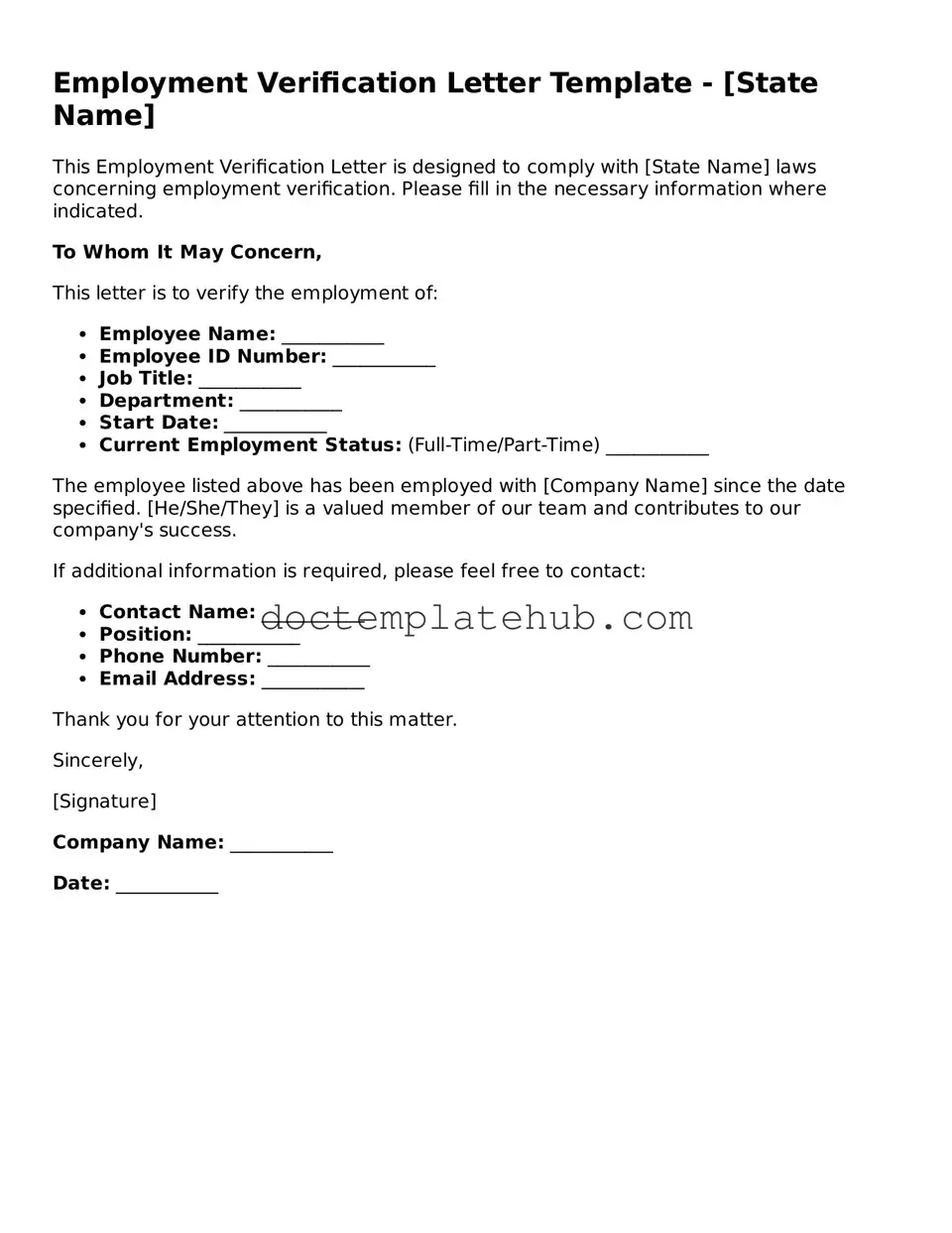What is the Employment Verification form?
The Employment Verification form is a document used to confirm an individual's employment status, including details such as job title, duration of employment, and salary information. This form is often requested by lenders, landlords, or other organizations that need to verify a person's income and employment history.
Who needs to complete the Employment Verification form?
Typically, the individual requesting verification will need to complete the form. This could be an employee seeking to apply for a loan, rental agreement, or any situation where proof of income is required. Employers may also fill out the form to provide the necessary information about their employees.
How do I obtain the Employment Verification form?
You can usually obtain the Employment Verification form from your employer's human resources department. If you are an employer, you may find templates available online or create a custom form that meets your specific needs.
What information is required on the Employment Verification form?
The form typically requires the employee's name, job title, dates of employment, salary or hourly wage, and the employer's contact information. Additional details may be requested depending on the specific requirements of the organization requesting the verification.
How is the Employment Verification form submitted?
Submission methods can vary. Some employers may prefer to send the completed form directly to the requesting party via email or fax, while others may provide the form to the employee to submit themselves. Always check with the requesting organization for their preferred method.
Is there a fee associated with completing the Employment Verification form?
Generally, there is no fee for completing the Employment Verification form. However, some employers may charge a small administrative fee, especially if the request requires additional processing or documentation. It's best to confirm with your employer if any fees apply.
How long does it take to process an Employment Verification request?
The processing time can vary depending on the employer's policies and workload. Typically, it may take anywhere from a few days to a couple of weeks. If you need the verification urgently, communicate this to your employer to see if they can expedite the process.
What should I do if my employer is unresponsive to my Employment Verification request?
If your employer is unresponsive, consider following up with a polite reminder. You might also want to check if there is a specific person or department responsible for handling such requests. If necessary, you can escalate the matter to higher management or human resources.
Can I request my own Employment Verification?
Yes, you can request your own Employment Verification. This is often done when you need to provide proof of employment for personal reasons, such as applying for a loan or renting an apartment. Make sure to specify what information is needed when making your request.
What should I do if there are errors on my Employment Verification form?
If you notice any errors on the Employment Verification form, contact your employer immediately to address the discrepancies. It’s important to resolve these issues quickly, as inaccuracies can affect your applications and opportunities.
